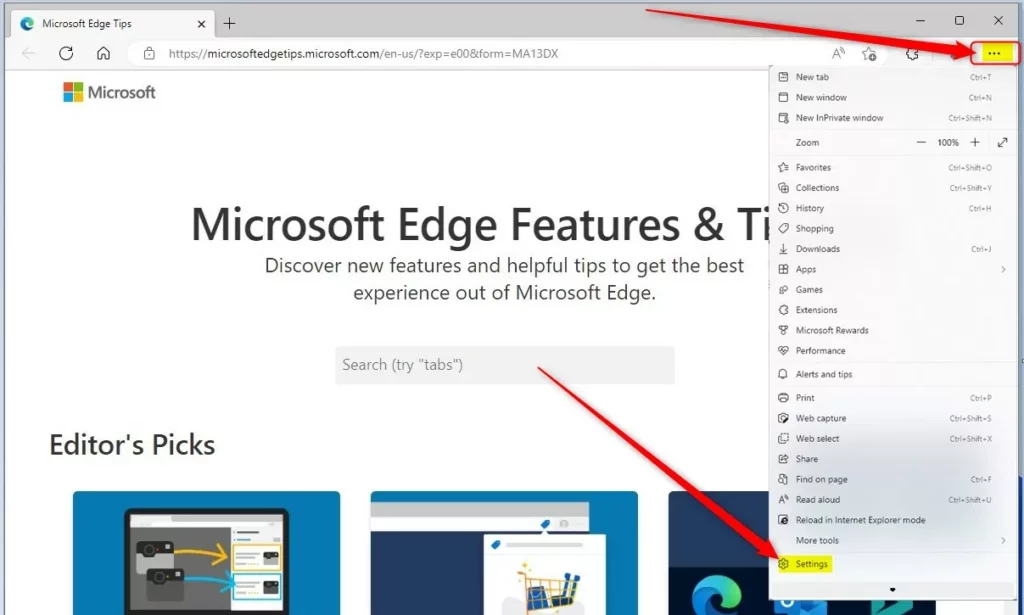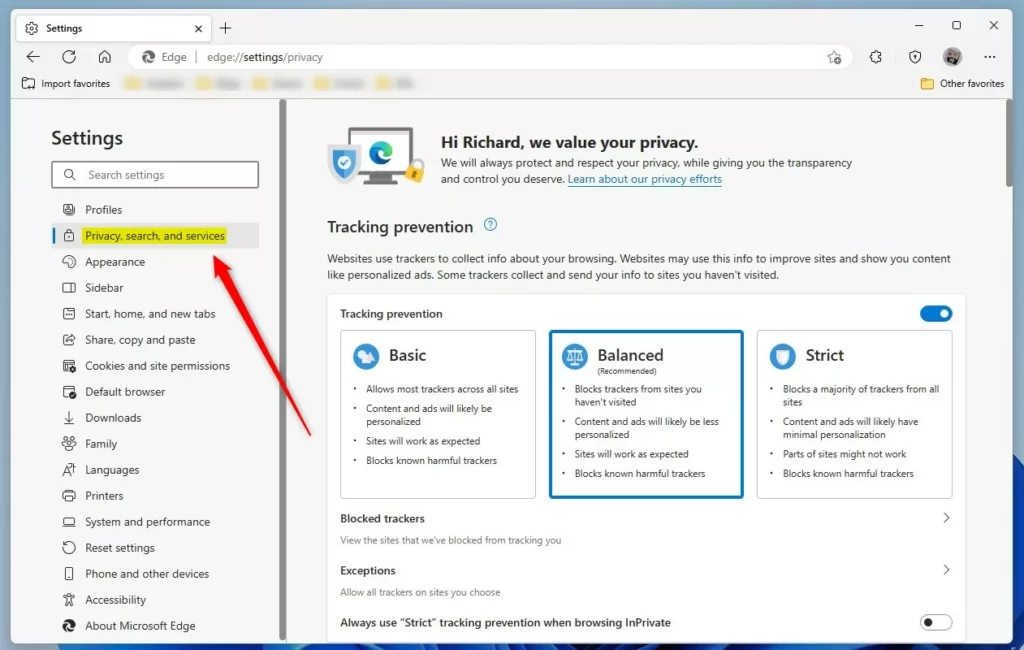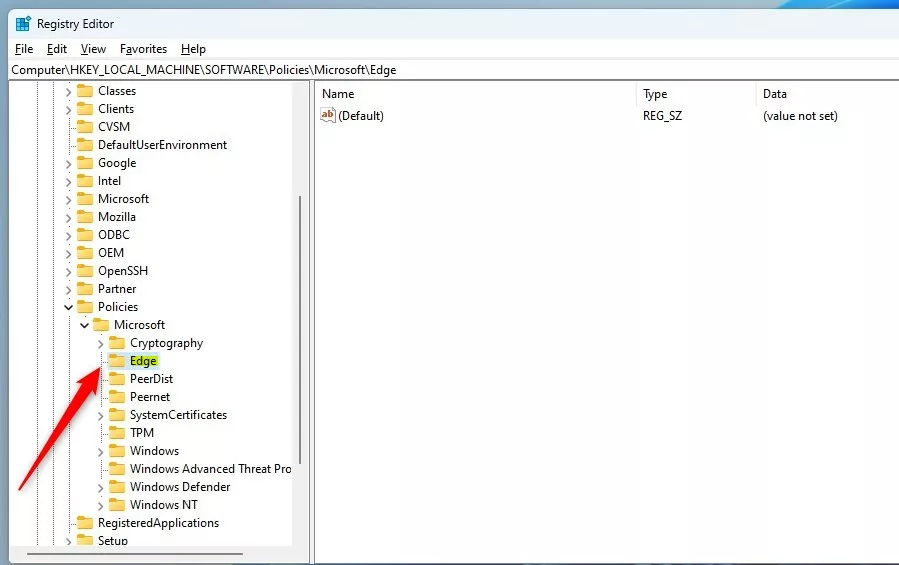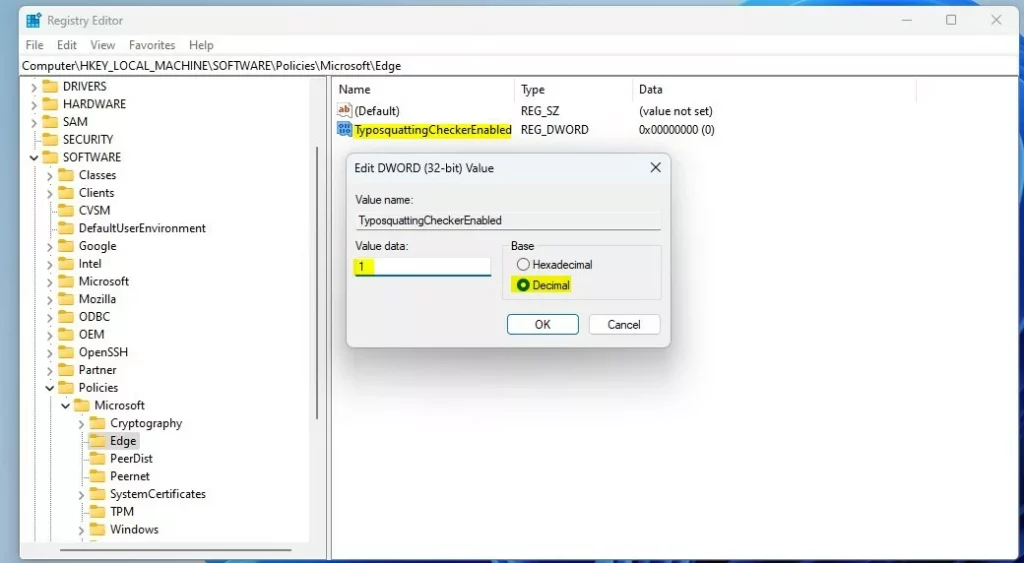This article describes steps to turn on or off Website typo protection in the Microsoft Edge browser.
Microsoft Edge is the default browser in Windows 11. However, users can switch to their preferred or favorite browser anytime. Edge is based on Chromium, similar to Google Chrome and other Chromium-based browsers today.
Typing an incorrect address can lead to potentially fraudulent websites planted by malicious actors when using a web browser.
To help enhance your online security, the Edge browser has a feature called Website typo protection that helps protect you when you accidentally navigate to a fraudulent site after misspelling a well-known site’s URL by guiding you to land on the legitimate site instead.
Below is how to enable or disable it in the Microsoft Edge browser.
Turn on or off Website typo protection in the Microsoft Edge browser
As described above, Website typo protection will help protect your online browsing experience by preventing you from landing on a malicious website.
Here’s how to turn it on or off with Edge.
First, open the Microsoft Edge browser.
Then click on Setting and more (Alt+F) 3 horizontal dots button on the top right corner and select Settings.

Next, click Privacy, search, and services on the left menu.

On the Settings -> Privacy, search, and services settings pane, under the Security section, toggle the button on the tile that says “Website typo protection” to On or Off.

Edge will not help protect you from navigating a malicious website if off. If enabled, Edge will protect you from mistakenly browsing a malicious website.
Turn on or off the prompt when you close a window with multiple tabs in Edge
Alternatively, users can use the Windows registry to show or hide the prompt in the Microsoft Edge web browser.
Open the Windows Registry and navigate to the folder key path listed below.
HKEY_LOCAL_MACHINE\SOFTWARE\Policies\Microsoft\Edge
If you don’t see the Edge folder key, right-click on the Microsoft parent key, then create the subkey (Edge) folder.

Right-click on the Edge folder key’s right pane and select New -> DWORD (32-bit) Value. Type a new key named TyposquattingCheckerEnabled.
Double-click the new value name (TyposquattingCheckerEnabled) and enter the Value data of 1 to enable Website typo protection in Microsoft Edge.
A Value data of 0 will disable Website typo protection in Microsoft Edge.

That should do it!
Reference:
Conclusion:
- Enabling Website typo protection in the Microsoft Edge browser can enhance online security by preventing accidental access to fraudulent websites.
- Disabling this feature may expose users to potential security risks and malicious websites.
- Utilizing the Windows Registry provides an alternative method for enabling or disabling Website typo protection in Microsoft Edge, offering a more advanced level of control.
- For further insights or contributions, feel free to use the comment form to provide feedback or additional information.

Leave a Reply